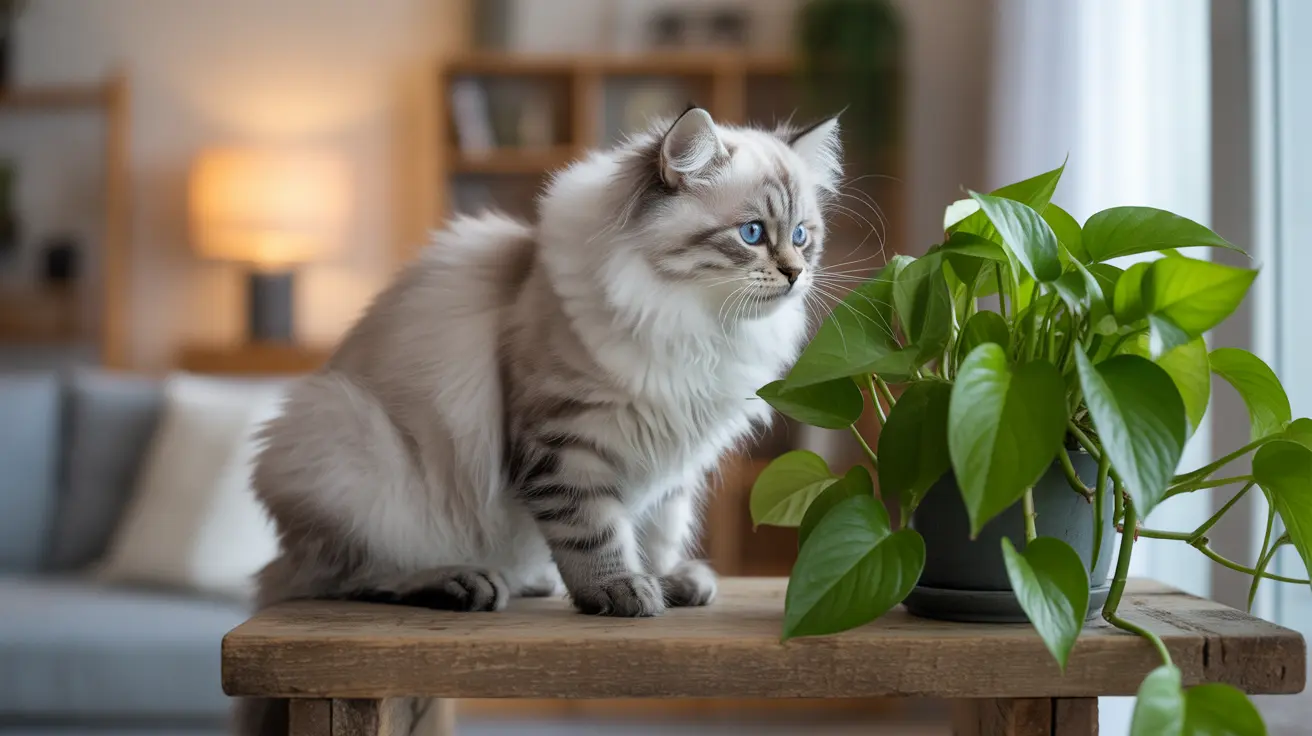Understanding the Dangers of Pothos Plants
Pothos plants, scientifically known as Epipremnum aureum, are among the most popular houseplants due to their stunning appearance and low maintenance requirements. However, these seemingly innocent plants pose a significant health risk to our feline companions. If you're a cat owner or planning to become one, understanding the toxicity of pothos plants is crucial for your pet's safety.
All varieties of pothos, including golden pothos, neon pothos, and devil's ivy, contain insoluble calcium oxalate crystals throughout their structure. These microscopic crystals can cause immediate and severe reactions when a cat chews or ingests any part of the plant.
The Science Behind Pothos Toxicity
The toxic mechanism of pothos plants lies in their calcium oxalate crystals, which are needle-shaped structures that immediately penetrate soft tissue upon contact. When a cat bites into a pothos leaf or stem, these crystals are released and embed themselves in the sensitive tissues of the mouth, throat, and digestive tract.
This immediate tissue damage triggers an inflammatory response, leading to intense discomfort and potentially serious health complications for your cat. The entire plant contains these harmful crystals, making every part equally dangerous to cats.
Recognizing Symptoms of Pothos Poisoning
Quick recognition of pothos poisoning symptoms can be crucial for your cat's well-being. Common signs include:
- Immediate oral irritation and burning sensation
- Excessive drooling or foaming at the mouth
- Pawing at the face or mouth
- Vomiting and gastrointestinal distress
- Difficulty swallowing
- Loss of appetite
- Swelling of the tongue and throat
- Lethargy or depression
In severe cases, particularly if large amounts are ingested, cats may experience breathing difficulties due to throat swelling. While fatalities are rare, the experience is extremely uncomfortable and requires immediate veterinary attention.
Emergency Response and Treatment
If you suspect your cat has consumed any part of a pothos plant, immediate action is crucial:
- Remove any plant material from your cat's mouth if possible
- Contact your veterinarian or animal poison control immediately
- Do not attempt to induce vomiting unless specifically instructed by a professional
- Keep the plant or a sample for identification purposes
- Monitor your cat's breathing and overall condition
Treatment typically involves rinsing the mouth to remove crystal residue, administering pain medication, and providing supportive care such as IV fluids if necessary. Most cats recover fully with prompt veterinary intervention.
Prevention and Safe Alternatives
The best approach to pothos toxicity is prevention. Consider these safety measures:
- Remove all pothos plants from your home or ensure they're completely inaccessible to cats
- Replace pothos with cat-safe alternatives like spider plants, Boston ferns, or parlor palms
- Create dedicated plant areas that cats cannot access
- Provide cat grass or catnip as safe alternatives for cats who like to chew plants
Frequently Asked Questions
Are pothos plants toxic to cats and what causes their toxicity?
Yes, pothos plants are toxic to cats due to insoluble calcium oxalate crystals present throughout the plant. These crystals cause immediate tissue damage when ingested or chewed.
What symptoms should I watch for if my cat ingests pothos?
Watch for excessive drooling, oral irritation, vomiting, difficulty swallowing, pawing at the mouth, and loss of appetite. In severe cases, breathing difficulties may occur.
How quickly do pothos poisoning symptoms appear in cats after ingestion?
Symptoms appear almost immediately after contact or ingestion, with oral irritation and drooling being the first noticeable signs.
What steps should I take if my cat eats part of a pothos plant?
Contact your veterinarian or animal poison control immediately, remove any visible plant material from your cat's mouth, and monitor their breathing and condition closely while awaiting professional guidance.
Are there safe, non-toxic houseplants I can keep instead of pothos if I have cats?
Yes, several pet-safe alternatives include spider plants, Boston ferns, parlor palms, and African violets. Always verify plant safety through the ASPCA's toxic plants database before bringing new plants into your home.
Conclusion
While pothos plants are beautiful and popular houseplants, their toxicity to cats makes them unsuitable for homes with feline companions. Understanding these risks and choosing pet-safe alternatives can help create a safer environment for your cats while still maintaining an attractive, plant-filled home.






